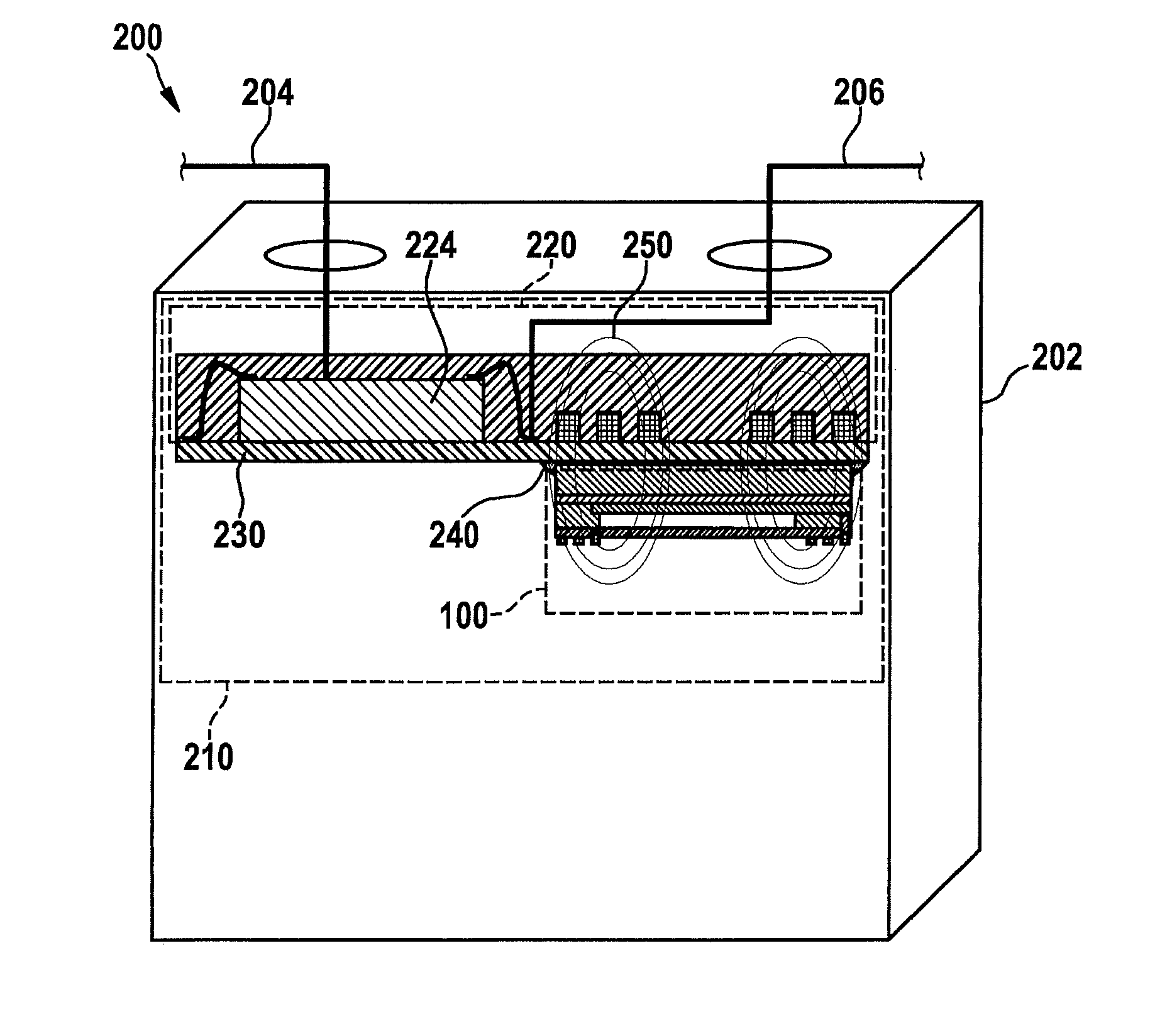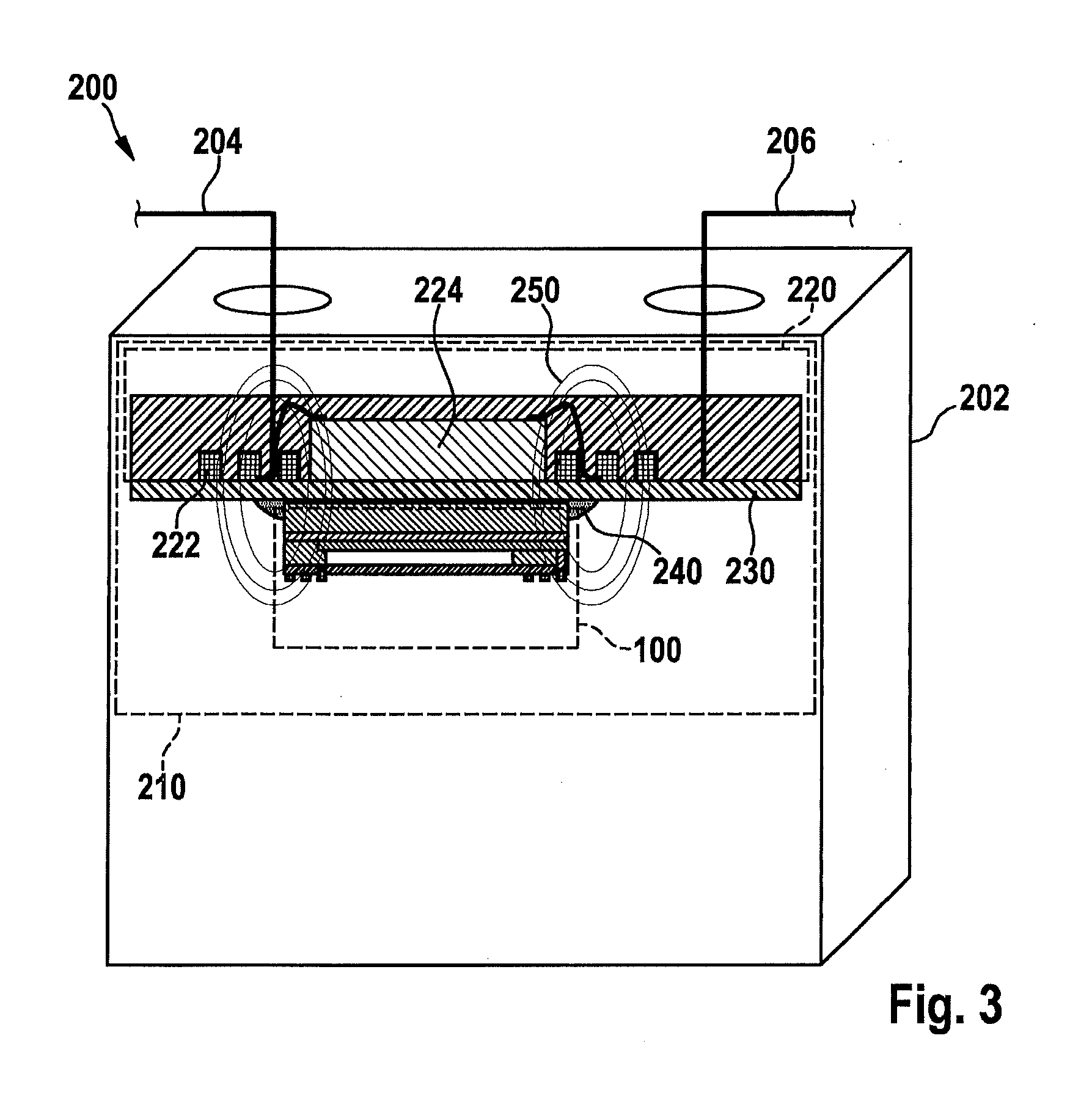Sensor apparatus for a battery cell of an electrical energy store, battery cell, method for producing said cell and method for transmitting sensor data inside said cell
a technology of electrical energy storage and sensor apparatus, which is applied in the manufacture of final products, wireless architecture, electric devices, etc., to achieve the effect of cost saving, simplified construction and connection technology to be used, and cost saving
- Summary
- Abstract
- Description
- Claims
- Application Information
AI Technical Summary
Benefits of technology
Problems solved by technology
Method used
Image
Examples
Embodiment Construction
[0041]In the description below of exemplifying embodiments of the present invention, identical or similar reference characters are used for the elements depicted in the various Figures and having a similar function, and said elements are not described again.
[0042]FIG. 1 schematically describes a sensing device 100 for a sensor apparatus in accordance with an exemplifying embodiment of the present invention. Sensing device 100 or the sensor apparatus can be part of a battery cell of a, for example, multi-cell electrical energy reservoir. Sensing device 100 is shown in FIG. 1 in a sectioned view. Sensing device 100 has a coupling element 110 in the form of a coil or sensor coil, and a sensor element 120 in the form of a pressure-sensitive membrane. Three windings of the coil of coupling element 110 are shown in FIG. 1 by way of example. Further sensor elements and optionally further electronic modules of sensing device 100 are not explicitly shown or labeled in FIG. 1. Sensing device ...
PUM
| Property | Measurement | Unit |
|---|---|---|
| Temperature | aaaaa | aaaaa |
| Pressure | aaaaa | aaaaa |
| Power | aaaaa | aaaaa |
Abstract
Description
Claims
Application Information
 Login to View More
Login to View More - R&D
- Intellectual Property
- Life Sciences
- Materials
- Tech Scout
- Unparalleled Data Quality
- Higher Quality Content
- 60% Fewer Hallucinations
Browse by: Latest US Patents, China's latest patents, Technical Efficacy Thesaurus, Application Domain, Technology Topic, Popular Technical Reports.
© 2025 PatSnap. All rights reserved.Legal|Privacy policy|Modern Slavery Act Transparency Statement|Sitemap|About US| Contact US: help@patsnap.com



